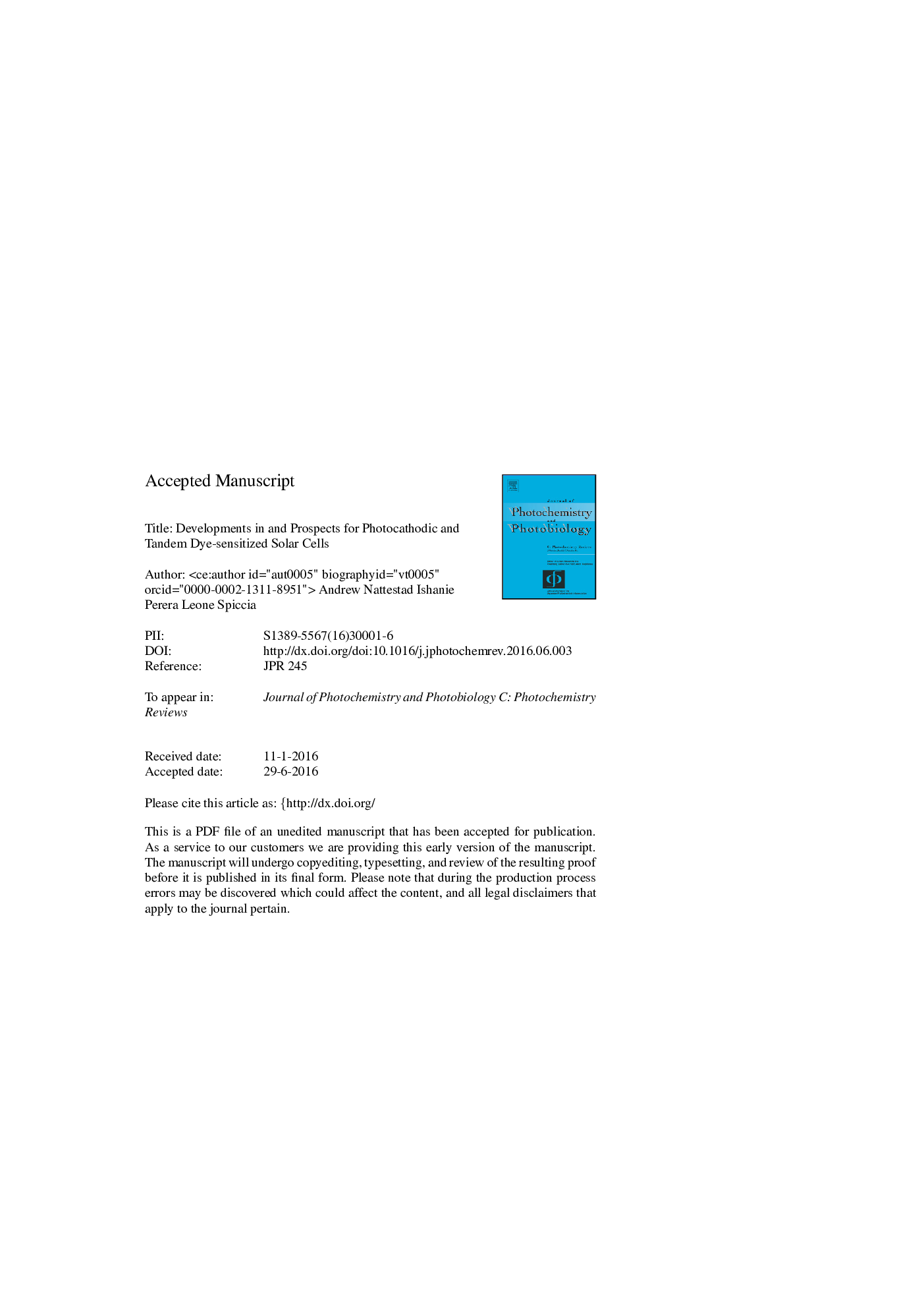| Article ID | Journal | Published Year | Pages | File Type |
|---|---|---|---|---|
| 6494004 | Journal of Photochemistry and Photobiology C: Photochemistry Reviews | 2016 | 80 Pages |
Abstract
Third generation photovoltaics are based on the concept of providing high conversion efficiencies with low device production costs. As such, second generation concepts, such as Dye-sensitized Solar Cells (DSCs), serve as a good starting point for the development of these new devices. Tandem DSC devices are one example of such a concept, and can be constructed using two photoactive electrodes (one photoanode and one photocathode) inside the one cavity, increasing the theoretical efficiency limit by around 50% as compared to the conventional design. As there has been substantial effort devoted to the development of n-type DSCs, the focus of researchers investigating tandem DSCs has been to create high performance p-type systems, which operate by an analogous, but inverted, mechanism to n-type DSCs.
Keywords
Related Topics
Physical Sciences and Engineering
Chemical Engineering
Bioengineering
Authors
Andrew Nattestad, Ishanie Perera, Leone Spiccia,
